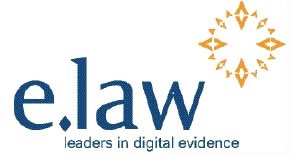Villain or white knight?
Promoted by

While technology has created an evidentiary mountain, it also offers strategies to minimise the burden of discovery.


While technology has created an evidentiary mountain, it also offers strategies to minimise the burden of discovery.
AUSTRALIAN LITIGATION practice rests upon a principle of disclosure that assumes all relevant evidence should be available to all parties prior to a hearing. To this end, the process of discovery has traditionally required each party to disclose “every document (that) relates to the matters in question in the action” (Peruvian Guano Case – 1882).
This was reasonable, and feasible, in circumstances where transactions were comprised of, and evidenced by, collections of paper documents. However, technology and our human and commercial responses to that technology have progressively caused potentially relevant records of transactions to grow and, more recently, to explode.
Today, with terabytes of data stored easily and with Cloud Computing making storage cheap and accessible, the volume of material to be reviewed for discovery can be enormous. The traditional test has become impractical if conventional techniques are applied, and courts have responded by reducing, or even eliminating, the “burden of discovery”.
The judicial trend is towards a tailored approach to discovery that, in some jurisdictions, results in no order for disclosure prior to service of evidence. This approach is underpinned by an assumption that discovery should not be undertaken as a matter of course and that, where undertaken, it should be tailored to maximise efficiency and effectiveness. Clearly, the court’s objective is to facilitate a disclosure protocol that accommodates the litigants’ and the court’s need for evidentiary completeness, without imposing a burden that is disproportionate to the value and significance of the claims.
The risk to practitioners, litigants and the court is the perception that this must result in a containment versus completeness dichotomy. And by application of traditional containment strategies (for example, the simple use of keywords, author names or timeframes), containment does, in fact, come at the expense of completeness. The reality is that technology, while on the one hand the villain in this piece through its role in causation of the evidentiary mountain, is also the white knight, offering strategies to minimise the evidentiary burden, without compromising completeness of disclosure.
Using current generation tools, such a concept (rather than keyword) driven analysis, email threading and de-_duplication, lawyers and the Court have the opportunity to focus on relevant evidence and to minimise inefficiencies while absolutely maintaining evidentiary completeness. These Internet-driven tools are available to all practitioners and the cost is modest, given their effectiveness.
While evidentiary volume minimisation is assumed to be the goal, rather than the spin off benefit of technologically-assisted review, evidentiary completeness is jeopardised. This has the potential to undermine just outcomes in the pursuit of cheaper process. The dichotomy of containment versus completeness is false and should be vigorously resisted.
Kylie Petersen is a director, consulting & services, at e.law international.
